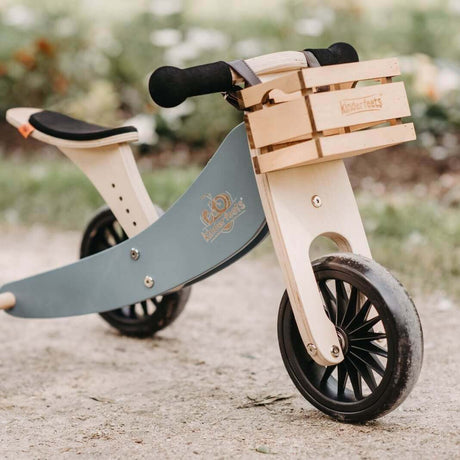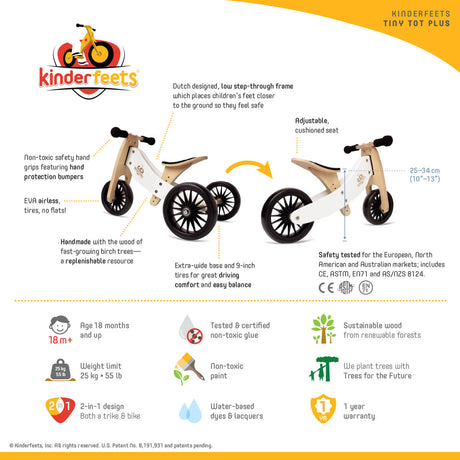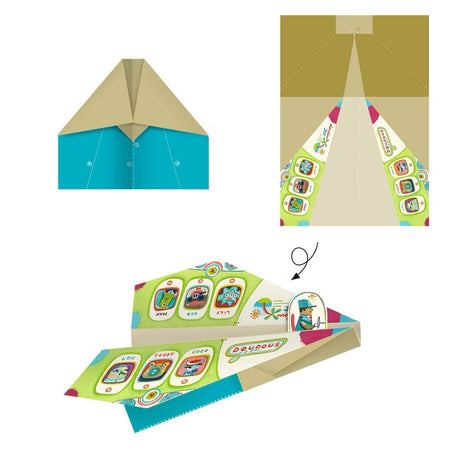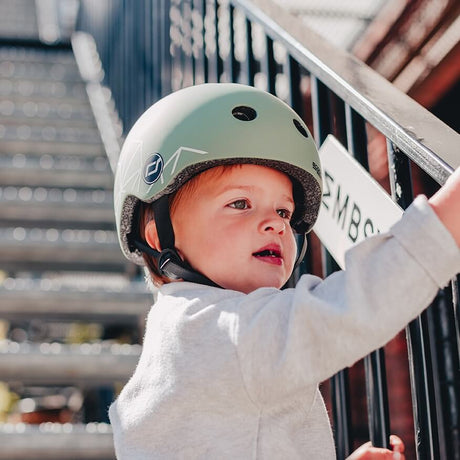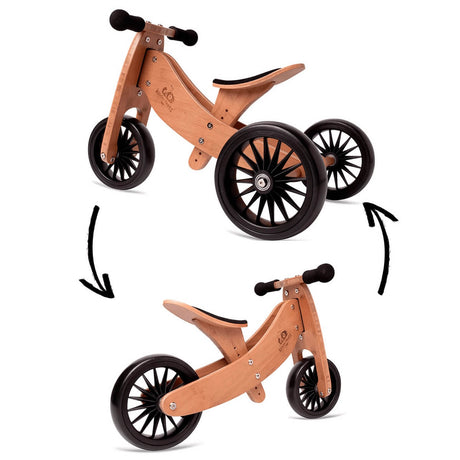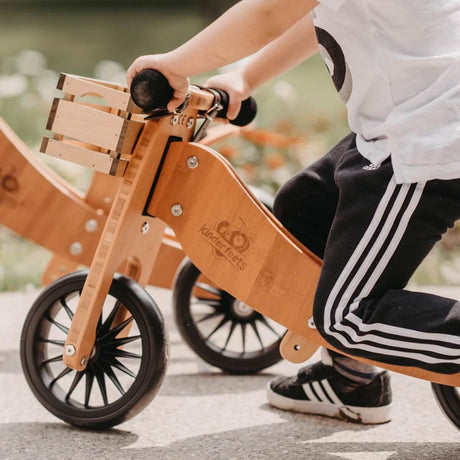It goes without saying that, in the mind of a pirate, taking risks is the key to a successful adventure, a philosophy that children naturally adopt in their quest for thrills by exploring various forms of play.
The 21st century is characterized by a strong aversion to risk compared to previous generations. Our society's fixation on safety and "risk-free" results in play spaces often devoid of adventure and interest, thereby depriving children of crucial opportunities to learn, interact and explore the world.
Nuance between danger and risk
Danger and risk are inherent in life, and the child will inevitably encounter them. The goal is not to eliminate them, but to teach the child to recognize and react to them.
Danger corresponds to “any source likely to cause damage (physical injury or damage to health) or negative consequences (hospitalization, incapacity, etc.) for the person”.
For example, a child who wants to climb very high in a tree whose branches are fragile and likely to break under his weight exposes himself to danger. This situation can have significant negative consequences for their health and safety.
Risk is the probability that this danger will materialize.
Risk taking: essential learning
Risk taking is a decision involving a choice with a certain degree of uncertainty .
The younger the child, the less able he is to perceive or analyze the situation, because he has not yet developed the skills to do so. He is therefore not always aware of the danger or the level of risk he faces, hence the importance of setting up a security framework adapted to the child.
A compromise and a personal choice
For risk-taking to be acceptable for the child, the advantages (new skills, feeling of pride and competence, discovery of one's limits, etc.) must be worth the price of the disadvantages likely to occur (hitting a knee, get dirty, fall, scratch your skin, etc.).
For example, taking your first steps requires taking the risk of falling. There is also risk taking when a child decides to walk on the trunk of a tree on the ground while knowing instinctively that he could slip and lose his balance. After a few attempts, success allows the child to access new learning.
Furthermore, the acceptability of risk varies according to each child, depending on their level of development, abilities, temperament and experiences.
The benefits of risk-taking for child development
To promote optimal development, children need to interact with the various elements that make up their immediate environment. In addition, he needs to explore the world independently, take risks, face (and eventually overcome) his fears and develop strategies adapted to the different challenges he faces.
This active interaction with the world is crucial to stimulating one's personal and social growth.
In a secure environment, the child gradually learns to protect himself. They develop their ability to assess risks in various situations, refining their critical judgment and decision-making. These skills, which are part of the brain's executive functions, will sharpen as they develop, enriching their understanding of the world around them.
Through these experiences, and as he gains autonomy, the child becomes more capable of assuming his own safety and ensuring that of others. He will thus derive pleasure, self-confidence and the satisfaction which arises from this feeling of competence.
In short, controlled and safe risk-taking is a pillar of child development, allowing them to navigate with confidence in a constantly changing world.
Risky Gambling Categories
Children engage in a multitude of unstructured play, often full of risk and adventure, each offering unique thrills and learning.
These joyful moments observed outside reveal various categories of risks, which serve as observation tools and are continually enriched through research. Understanding these categories helps us understand children's motivations and the types of thrills they seek.
Games at height: These games include climbing, jumping, hanging and swinging at different heights, as well as maintaining balance at height. Falling represents the main risk of physical injury here.
High-speed games: This category includes sliding, pirouettes, running and swings. Some games may also involve specific equipment such as skis, sleds or bicycles, where the use of safety equipment such as helmets can minimize the risk of injury.
Manipulation of tools and objects: The use of tools has long been a key part of children's growth. Today, although less common, the safe handling of tools such as saws, hammers and knives remains a rich experience for children, under the supervision of a competent adult.
Rough games (battle or bickering): These games include fighting, dragging and pushing games. Although they are less observed in schools, they are crucial for teaching children about consent and managing emotions.
Activities around natural features: Playing near features like fire or deep water poses risks, requiring informed supervision and clear instructions for safe exploration.
Wandering play: While we can't let children literally get lost, creating environments where they feel free from direct supervision fosters their sense of adventure and independence.
Impact play: Seeking thrills by hitting or breaking objects, such as snow or ice, or throwing themselves face down into water, gives children first-hand experience of the physical consequences of their actions.
Construction play: building stable or unstable structures not only develops motor skills, but also engages imagination and problem solving.
Breaking the rules: Testing boundaries and rules is a natural part of children's play, allowing them to understand and negotiate the boundaries of their environment.
These categories aren't just ways to classify games; they represent the diverse ways children interact with the world, test their limits, develop confidence and autonomy, and learn to manage risks safely.
As educators and parents, understanding these categories helps us guide children through their adventures, ensuring a balance between safety and the freedom essential to their development.
The case of the slide
Playpens are designed to be safe, even if children divert the games from their intended use. It is important to respect interpersonal skills and understand when it is appropriate to let children explore freely.
Well-balanced security: a question of balance
Providing well-balanced security means allowing measured and beneficial risk-taking. This approach can result, among other things, in:
- a safe, stimulating and functional layout of the premises;
- equipment adapted to the child's condition and level of development;
- the communication of clear and concise instructions , adapted to the age and understanding of your child;
- a caring attitude of the adult towards the child, but also the importance given to risk-taking when playing.
It is in this balance that the child can flourish, develop his autonomy and learn to protect himself.
5 ideas to encourage safe risk-taking
1. Differentiate between risk and danger
Understand the distinction between a danger, something the child does not see, and a risk, something he perceives and chooses to confront. Provide safe spaces for open play.
If parents can prevent dangers and often even avoid them completely, it is the responsibility of children to take (or not!) risks.
Taking reasonable risks allows you to learn to assess dangers and your capabilities, to test your limits and to make informed choices. This is particularly beneficial for discovering personal resources, developing skills, and acquiring confidence and autonomy.
2. Resist the urge to intervene
The hardest part about allowing your child to take risks? Resist!
Avoiding becoming a helicopter parent refers to a parent who is always there for their child to sanitize the environment and do things for them so that nothing happens to them. Let the child experiment for themselves while remaining vigilant!
3. Develop your sense of observation
So what do we do at the park if we resist the impulse to intervene? No question of getting lost on Facebook!
Encouraging risk-taking in our children requires keen discernment and constant practice on the part of parents.
It is essential to remain attentive and observe our children, from up close or from a distance depending on their age. Imagine them climbing a rock: we watch them from afar, ready to intervene only if they request our help.
This approach requires careful observation, engaged presence, and sustained attention. Rather than doing things for them, adults must:
- encourage their initiatives while ensuring that the game remains fun;
- observe their current capabilities while anticipating their evolution;
- offer them challenges adapted to their level and pace;
- adjust their support and attitude according to their stage of development and their specific needs.
4. De-dramatize injuries
It's inevitable: if you let your child play freely and actively with the risks that this entails, you will have to deal with bruises and scratches. The important thing is to play down these minor injuries.
By taking risks themselves, the child will develop self-protection. Yes, he will fall, but it will be etched in his memory. He will learn from his experience. Whereas, if we prevent him from trying, we have just created a notion of danger in his mind.
5. Provide opportunities for free and active play
By practicing free and active play, children are better able to develop their initiative and choose to take risks themselves. He tests his limits, repeats the same movements over and over again to develop his skills and improves his autonomy.
Here are some key verbs to help parents let go when the time comes:
- Climb a tree, in a structure in the park, on a rock.
- Jump into the water from a dock or poolside, from an inflatable, from a rock, from a park structure, from a park bench.
- Ride a bike, on a skateboard, on a scooter.
- Try new sports as a family: cross-country skiing, snowshoeing, paddle boarding, kayaking... Seeing you take risks will make your children want to do it too.
- Going outside: It is easier to play outside, we expend more energy and young people make greater movements. In addition, it diversifies the material to which we have access.
In conclusion
To summarize, hazard is a potential source of harm, while risk is the likelihood that that hazard will materialize. It is crucial to put in place an appropriate security framework, especially for the youngest who have not yet fully developed their perception and analysis of situations.
Completely risk-neutralized play deprives children of the opportunity to learn, engage, and explore the world. We encourage a spirit of adventure and creating opportunities for children (and adults) to explore and test their own abilities, manage risks and grow as resilient and resourceful children.
Let's encourage children to navigate the world with curiosity, courage and confidence, while ensuring their safety and well-being.


































